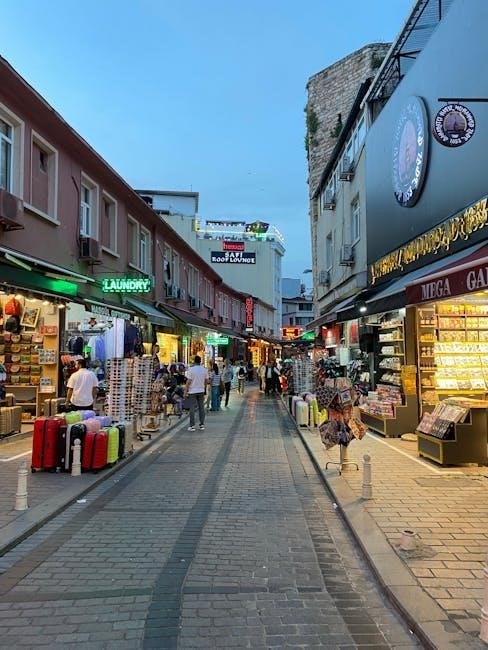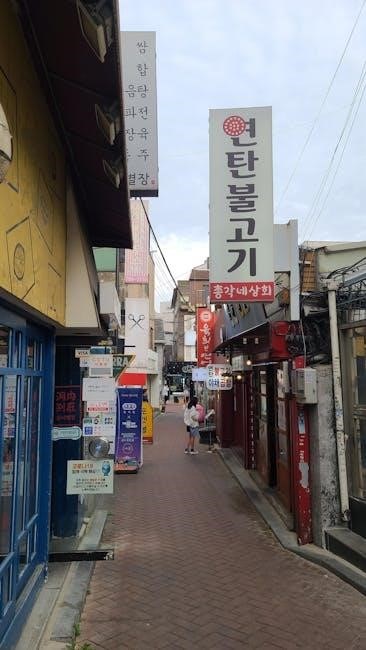Efficient shopping involves maximizing time and resources while minimizing unnecessary purchases. By planning meals, organizing lists, and avoiding impulse buys, you can streamline your shopping process and make smarter, cost-effective decisions every time.

Understanding the Importance of Planning
Planning is the cornerstone of efficient shopping, helping you save time, reduce stress, and avoid impulse purchases. By mapping out your needs beforehand, you can ensure that your shopping trip is focused and productive. A well-thought-out plan aligns your spending with your priorities, preventing unnecessary expenses and helping you stick to your budget. This approach also reduces the likelihood of forgetting essential items, minimizing the need for return trips to the store.
Effective planning begins with understanding your household’s needs, checking what’s already in stock, and identifying gaps. This process ensures that your shopping list is accurate and tailored to your requirements. Additionally, planning allows you to take advantage of sales, buy in bulk when beneficial, and make healthier choices by avoiding last-minute, hunger-driven decisions. By prioritizing organization and intentionality, you can transform shopping from a chaotic task into a streamlined process that supports your lifestyle and financial goals.

Key Tips for a Quick and Effective Shopping Trip
A well-organized shopping trip starts with a clear plan and strategic execution. By creating a detailed list, planning meals, and avoiding distractions, you can navigate the store efficiently. Organizing your list by aisle ensures a logical flow, reducing backtracking and saving time. Shopping during off-peak hours minimizes crowds and speeds up checkout. Additionally, using store websites to preview sales and stock can help you make informed decisions beforehand. Staying flexible to take advantage of unexpected deals while sticking to your list balances savings and discipline. These strategies collectively streamline the shopping process, ensuring you accomplish your goals swiftly and effectively.
Create a Detailed Shopping List

Creating a detailed shopping list is the cornerstone of efficient shopping. Start by planning your meals for the week, ensuring you account for breakfast, lunch, dinner, and snacks. This helps avoid impulse purchases and ensures you only buy what you need. Organize your list by store aisles, such as produce, dairy, and bakery, to minimize backtracking. Include quantities and specific brands if necessary, and check for items already in your pantry to avoid duplicates. Sticking to your list reduces the likelihood of buying unnecessary items, saving both time and money. For added efficiency, use a digital note-taking app to easily update and reference your list while shopping. A well-structured list not only streamlines your shopping experience but also helps you stay focused and avoid distractions, ensuring a quick and productive trip.
Plan Your Meals for the Week

Planning your meals for the week is a crucial step in efficient shopping. By deciding what you’ll eat for each meal, you can create a focused shopping list and avoid impulse purchases. Consider your schedule, dietary preferences, and ingredient availability to craft realistic meal ideas. This approach reduces food waste and ensures that every item you buy has a purpose. Start by listing breakfast, lunch, dinner, and snacks for each day, taking into account leftovers or meals that can be prepped in advance. For example, roasting a whole chicken on Sunday can provide leftovers for salads or sandwiches later in the week; Additionally, plan meals around seasonal produce or items on sale to maximize savings. Having a clear meal plan also helps you shop more efficiently, as you’ll know exactly what to look for in each aisle. This strategy not only saves time but also helps you stick to your budget and enjoy balanced, nutritious meals throughout the week.
Avoid Shopping When Hungry
Avoiding shopping when hungry is a simple yet effective strategy to improve your shopping efficiency. When you shop on an empty stomach, everything looks appealing, leading to impulse purchases and overspending. Studies show that hungry shoppers tend to buy more unhealthy snacks and non-essential items. To prevent this, plan your shopping trips after a meal or snack. This will help you stay focused on your list and avoid temptation. Additionally, eating before shopping ensures you make rational decisions, reducing the likelihood of buying unnecessary items. Sticking to your list becomes easier, and you’re more likely to purchase healthy, planned options. By avoiding hunger-driven purchases, you’ll save money, reduce waste, and maintain healthier eating habits. Always prioritize eating before heading to the store to keep your shopping trip efficient and budget-friendly.

Organize Your List by Store Aisles
Organizing your shopping list by store aisles can significantly streamline your shopping experience. By grouping items based on their locations within the store, you can navigate more efficiently and avoid backtracking. This method ensures you visit each section only once, saving time and reducing the likelihood of forgetting items. Start by categorizing your list into sections like produce, dairy, meats, canned goods, and household items. This approach also helps you stay focused and avoid impulse purchases. Additionally, organizing your list this way makes it easier to spot items you might have missed, ensuring you don’t leave the store without everything you need. Over time, this strategy becomes second nature, making your shopping trips faster and more productive. By aligning your list with the store’s layout, you’ll shop smarter, waste less time, and enjoy a more stress-free experience.
Stick to Your Shopping List
Sticking to your shopping list is one of the most effective ways to ensure a efficient and focused shopping trip. A well-planned list helps you avoid impulse purchases, saving both time and money. When you know exactly what you need, you’re less likely to be distracted by tempting displays or unnecessary items. This approach also reduces decision fatigue, allowing you to navigate the store with clarity and purpose. Additionally, adhering to your list helps you stay within your budget and avoid overspending. To maximize this strategy, review your list before entering the store and keep it handy as you shop. By staying committed to your list, you’ll leave the store feeling accomplished and confident that you’ve made smart, intentional choices. Over time, this habit will become second nature, making every shopping trip more streamlined and stress-free.
Shop During Off-Peak Hours
Shopping during off-peak hours can significantly enhance your shopping experience by reducing crowds and long checkout lines. Early mornings, late evenings, or mid-week days are often the best times to visit stores, as they are less busy. This allows you to navigate aisles more efficiently, find items quickly, and enjoy a more relaxed atmosphere. Additionally, shopping during these times can help you avoid the stress of crowded spaces, giving you more time to make thoughtful decisions. Many stores also restock shelves during off-peak hours, ensuring that products are available when you need them. By choosing these times, you can save time, reduce frustration, and make your shopping trip more enjoyable. This strategy is especially beneficial for those with tight schedules or who prefer a calm, unhurried shopping environment. Over time, it becomes a practical habit that streamlines your routine and enhances overall efficiency.
Utilize Store Websites for Pre-Shopping

Visiting store websites before heading out can significantly streamline your shopping experience. Many retailers now offer online access to product availability, prices, and weekly specials. By browsing these sites, you can identify the best deals, check stock levels for essential items, and even download digital coupons. Some stores also provide tools to create and organize your shopping list based on aisle layouts, ensuring you don’t miss anything. This pre-shopping step saves time by helping you avoid unnecessary purchases and impulse buys. Additionally, it allows you to compare prices and plan your budget more effectively. Certain stores offer online ordering with curbside pickup or express checkout lanes for pre-shoppers, further enhancing convenience. By leveraging these resources, you can make informed decisions, reduce time spent in the store, and ensure a smoother, more efficient shopping trip. This modern approach to shopping is both practical and time-saving, making it a valuable habit for busy individuals.
Stay Flexible for Deals and Discounts
Remaining flexible during your shopping trip can lead to significant savings and a more efficient experience. By being open to alternative brands, sizes, or substitutes, you can take advantage of unexpected deals or discounts. For instance, if your preferred brand isn’t on sale, consider purchasing a similar product that is discounted instead. Additionally, keep an eye out for in-store promotions, such as “buy one, get one free” offers, and adjust your list accordingly. Cashback apps and digital coupons can also provide last-minute savings opportunities. Staying flexible not only helps you save money but also reduces impulse purchases, ensuring you stick to your budget. This approach encourages smart shopping habits while allowing you to adapt to the best available deals. By embracing flexibility, you can maximize your savings and make the most of your shopping trip without compromising on quality or convenience.

